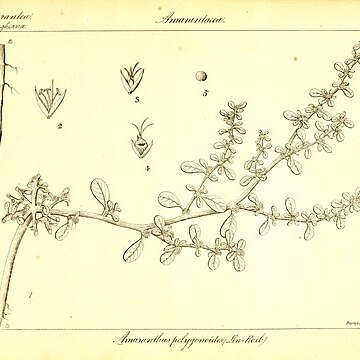Plants annual, glabrescent proximally, pubescent distally, becoming glabrous at maturity. Stems erect-ascending to pro-strate, branched mostly at base and in proximal 1/2, 0.1-0.5 m. Leaves: petiole ± equaling blade; blade ovate, obovate-rhombic to narrowly ovate, sometimes lanceolate, 1.5-3(-4) × 0.5-1.5(-2) cm, base cuneate, margins entire to undulate-erose, apex rounded, obtuse, or emarginate, mucronate. Inflorescences axillary, congested clusters. Bracts of pistillate flowers lanceolate or linear, 1-1.5 mm, 1/2 as long as tepals. Pistillate flowers: tepals 5, connate in proximal 1/3 (entirely distinct in all other species), with 3 prominent veins abaxially, spatulate or somewhat clawed, equal or subequal, 2-3 mm, apex rounded or retuse, mucronate; style branches somewhat spreading; stigmas 3. Staminate flowers intermixed with pistillate; tepals (4-)5; stamens 2-3. Utricles cylindric or narrowly turbinate, 2-2.5 mm, ± equaling tepals, smooth proximally or roughened toward tips, indehiscent or tardily dehiscent. Seeds dark reddish brown to black, lenticular, 0.8-1 mm diam., shiny.
More
A small annual plant. It can be erect or lie over. It grows 10-50 cm high. It has soft spikes on young shoots. The leaves are narrowly oval and 3 cm long by 1.5 cm wide. The flowers are in congested clusters in the axils of leaves. The seeds are dark brown and shiny. They are lens shaped and 1 mm across.

